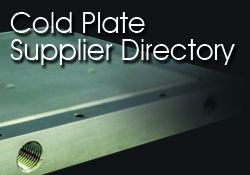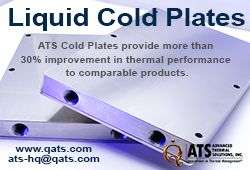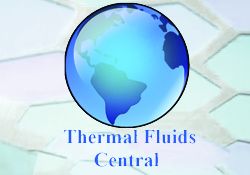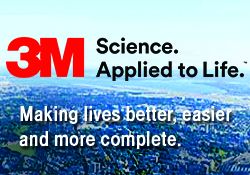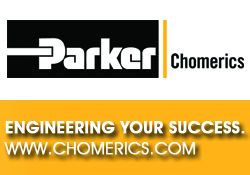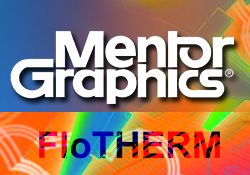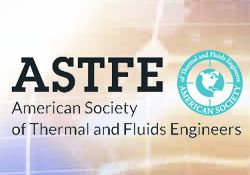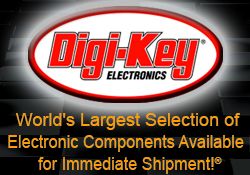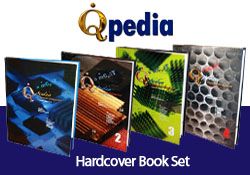coolingZONE-12 Thermal Management of Electronics eConference (August 29th and 30th)
Conference Program
conference: coolingzone-12 thermal management of electronics econference program
date: wednesday august 29 and thursday august 30, 2012
time: 9:30am to 5pm est
each speaking session will last approximately 45 minutes, including q&a. there will be 10-15 minutes between each session. all times eastern standard time. times are approximate given speaking and questions and answers.
| time |
wednesday program |
| 9:30am |
host introduction and opening remarks |
| 10:00am | keynote address |
| intrachip microfluidic cooling - gen3 thermal packaging technology |
|
| avram bar-cohen, ph.d. program manager, darpa-microsystems technology office |
|
| from the dawn of the information age thermal management technology has played a key role in the continuing miniaturization, performance improvements, and higher reliability of electronic systems. during the past 65 years, thermal packaging has migrated from ventilation and air-conditioning to cabinet cooling, to package cooling with heat sinks and cold plates, and is today addressing on-chip hot spots and near-junction thermal transport. following a brief history of thermal packaging, attention will turn to a review of emerging darpa-driven micro and nano-technologies for reducing the thermal resistance of defense electronic systems. the asymptotic maturation of current technology and growing thermal management demands in high performance computing and rf systems have led darpa to initiate efforts in third-generation thermal management technology based on intrachip and interchip microfluidic cooling. the motivation, technological thrusts, and promise of this new thermal management paradigm will be discussed. | |
| 11:00am | flow and thermal optimization in cfd (cd-adapco) |
| ruben bons |
|
| electronics sector manager, cd-adapco |
|
| natural convection is the preferred method of cooling for many electronic systems, including leds, due to the inherent simplicity, reliability, size, weight, and power requirement advantages over forced air cooling. design of natural convection-cooled systems can benefit enormously from the insight provided by flow and thermal simulation, especially when the sensitivity to various design variables is investigated. |
|
| 12:00pm | break |
| 12:30pm | using computers to go where experiments cannot: massively-parallel les of turbulent heat transfer |
| andrew t. duggleby, ph. d. assistant professor, department of mechanical engineering, texas a&m university |
|
| for decades, the steady increase in modern computing technology has allowed for faster as well as larger, more complex simulations. with all this computing power, there are still only two areas in which a numerical simulation is better than an experimental data: (1) quick, reliable (510-20% error) simulations for design optimization, and (2) massive resolution, highly accurate (< 1% error) simulations. in both cases the computer is going where experiments cannot. in quick simulation case, the simulations are faster and cheaper than any experiment, yielding results (hopefully trustworthy results) fast enough to be included in a design cycle. in the highly-resolved case, the resolution is far beyond any experimental measurements - in the context of turbulent heat transfer, the entire velocity, pressure, and temperature fields are known everywhere at all times. in this talk, the current state-of-the-art for both the quick simulations and the highly- resolved simulations will be discussed in the context of turbulent heat transfer. for the quick simulations, recent advances in not just simulation time, but total cad to analysis time will be discussed: (a) computer-aided design (cad) model to mesh time, (b) simulation time, (c) accuracy vs time trade-os (models, resolution, etc), (d) analysis time. for computational fluid dynamics and heat transfer, this almost always refers to the steady-state reynolds-averaged navier-stokes (rans) models, but an example will be given for a time-dependent large eddy simulation of a venturi nozzle where cad to analysis was done in under 24 hours. for the highly-resolved simulations, analysis techniques to elucidate useful information out of terabytes of data are discussed, with an example of pin-n heat transfer direct numerical simulation (dns) where the modes responsible for heat transfer are extracted via proper orthogonal decomposition (pod), and then enhanced by endwall contouring resulting in increased convection with minimal drag increase. | |
| 1:30pm | fan flow performance enhancements using noreaster technology (ats, inc.) |
| eric proos, advanced thermal solutions, summer intern |
|
| increased density of electronics both at the silicon level and board level have created an ever increasing need for advanced cooling technologies. increasingly, liquid cooling, whether heat pipes, cold plates or full liquid cooling systems, are being seen as the next technologies to implement. ats has developed an advanced active air cooling technology for these high power devices. the technology is noreaster. ats experimental data show that noreaster provides, on average, a 25% increase in a fan’s cooling capabilities when tested using a 31mmx31mm aluminum base with 9.5mm finheight. this presentation will discuss the test data, findings and applications of this air cooling technololgy | |
| 2:30pm | high-performance thermal management materials |
| carl zweben, ph.d. advanced thermal materials consultant life fellow, asme; fellow, sampe & asm; associate fellow, aiaa |
|
| in response to well-recognized needs, there have been revolutionary advances in thermal management materials. silicon carbide particle-reinforced aluminum (al/sic), which was first used in thermal management by the speaker’s group at ge in the 1980s, is now well established. by replacing a copper base plate with al/sic, one igbt supplier “eliminated solder fatigue”, extending guaranteed life from 10 to 30 years. there are an increasing number of new materials with low coefficients of thermal expansion (ctes) and low densities having thermal conductivities up to 1700 w/m-k. some are cheaper than traditional materials. payoffs include: increased reliability; reduced junction temperatures and weight; low-cte, thermally conductive pcbs, potentially eliminating the need for underfill; cte matching allows direct attach with hard solders, reducing thermal resistance and solder fatigue. there are a large and increasing number of microelectronic and optoelectronic applications, including: pcbs and pcb cold plates; heat sinks; microprocessor, rf and power modules; heat spreaders and sinks; led and laser diode modules; thermoelectric coolers; plasma and lcd displays; detectors; and photovoltaics. this presentation covers the large and increasing number of advanced thermal management materials, including properties and the growing array of applications. |
|
| 3:30pm |
thermal engineering of microelectronics devices and thermal interface materials |
| mehdi asheghi, ph.d. consulting associate professor, mechanical engineering department stanford university |
|
| this presentation provides an overview of the challenges facing the semiconductor industry and will cover topics ranging from nanoscale heat transport in microelectronic devices to nanoscale thermal engineering of thermal interface materials (tim). in particular, we will the discuss the near junction thermal transport in field effect transistor (fet), silicon-on-insulator fet, finfet and high electron mobility transistors (hemt). recent advances in thermal characterization and engineering of cnt-based and electrodeposited metal nanowire tims will be reported. |
|
| 4:30pm | host closing remarks |
| thursday program | |
| 9:30am | host introduction and opening remarks |
| 10:00am | keynote address |
| state of the thermal management market | |
| alan wong, ph.d. president and c.e.o, aavid thermalloy, llc. |
|
| 11:00am | future directions for dispensible tims |
| dr. philip blazdell | |
| this talk outlines the commercial and technological needs for a new class of thermal interface materials, namely those that are dispensable. there is much misconception about these materials and how the marketplace needs them presented so this paper will clarify the key thermal, mechanical, rheological and engineering requirements for such materials. one such possible technical solution will be presented as will some comments on the future directions of these materials |
|
| 12:00pm | break |
| 12:30pm | indirect liquid cooling of electronics with micro- and mini-scale cold plates and heat sinks: theoretical and practical implications for enhanced cooling and energy recovery |
| alfonso ortega, ph.d. james r. birle professor of energy technology associate dean for graduate studies and research director, laboratory for advanced thermal and fluid systems college of engineering, villanova university |
|
| indirect liquid cooling via cold plates and liquid cooled heat sinks has become a necessary part of the potential design space for cooling electronic systems as the thermal margin for air cooling vanishes. in high density data center applications, liquid cooling offers the possibility not only of enhanced cooling, but also increases the potential for waste energy recovery. as liquid cooled solutions start to seriously contend for implementation, understanding their behavior will lead to better design processes, tools, and ultimately optimized solutions. this lecture will focus on understanding the basic behavior of liquid cooled heat sinks and cold plates, in single and two-phase flow. we will compare the various metrics that can be used to assess their performance, including the overall thermal resistance and the heat exchanger effectiveness. finally, we will discuss the use of analysis tools in their design in particular to show the value of simple modeling approaches compared to full cfd approaches. | |
| 1:30pm | best practice in thermal design for led lighting |
| norbert p. engelberts ceo and founder of optimal thermal solutions bv (ots) |
|
| in today’s electronics industry, there is a constant push to have more functionality in a smaller volume. the dissipated power per function is decreasing, but more and more functions will be put within a smaller volume. ic’s, asics, leds are becoming more and more powerful and the thermal load per surface area and volume is increasing. as the result, thermal management of electronics and in particular led has taken the centre stage for their successful implementation. the presentation will discuss the combination of analytical modelling, computational modelling and experimental testing to help the designer to come up with the most optimal solution and how the final product need to be verify by thermal characterisation and measurements and the challenges involved in doing this. |
|
| 2:30pm | next generation embedded liquid cooling with ultra low thermal resistance |
| michael m. ohadi, ph.d. professor of mechanical engineering and director of advanced thermal management laboratory calce electronics systems and products center department of mechanical engineering, university of maryland |
|
| the demand for increased functionality of electronic products and the simultaneous trend of smaller feature size continue to raise dissipated power and the resulting power densities in electronic systems, introducing new challenges and opportunities in thermal management of modern electronics. successful next generation thermal management systems will have to mitigate thermal limitations on the operation of high performance electronic systems to satisfy the increasing market demand for faster, smaller, lighter, and more energy efficient and cost effective products. the next generation cooling systems will integrate the thermal management techniques into the chip layout, and/or package design, to provide substantially enhanced cooling performance with ultra-low thermal resistance between chip-level heat generation and system-level heat removal path. this presentation will review most recent progress in embedded micro cooling systems, including use of use of thin film micro channel cooling. the technique involves utilization of 3-d structures and a distributed liquid delivery, with dedicated channels for vapor and liquid to maximize phase change heat transfer while facilitating isothermalization of the surface and minimizing the pressure drops and the associated pumping power requirements. record-high heat transfer coefficients have been experimentally demonstrated with heat removal capability in excess of 1 kw/cm2 and heat density of 1 kw/cm3. | |
| 3:30pm | materials for microelectronic and led heat dissipation |
| deborah d.l. chung, ph.d. director, composite materials research laboratory niagara mohawk chair professor of materials research professor of mechanical and aerospace engineering university at buffalo, state university of new york |
|
| overheating is one of the biggest problems in the microelectronic and led industries, as it limits the power, reliability, performance and further miniaturization. this problem particularly affects high-performance and high-power devices. for heat dissipation from a hot surface, heat needs to flow from the hot surface to a heat sink or a heat spreader. a heat sink is a thermal conductor that has a considerable heat capacity so that it serves as a sink for the heat. a heat spreader is a thermal conductor that serves as a conduit to channel the heat away from the heat source. heat is dissipated from both heat sink and heat spreader to the environment. suitable thermal insulation to avoid the dissipated heat to degrade nearly electronic components is often needed. due to the low thermal expansion coefficient of semiconductors and their substrates, a low thermal expansion coefficient is preferred for the heat sink/spreader; otherwise, thermal fatigue may occur upon temperature cycling. the effectiveness of the heat flow from the heat source to the heat sink/spreader is partly governed by the quality of the thermal contact between the heat source surface and the surface of the heat sink/spreader. improvement of the thermal contact requires a thermal interface material, which needs to be conformable. conformability is essential due to the need to displace the air from the interface between contact surfaces that are necessarily not completely smooth. as long as the thermal conductivity exceeds that of air, a highly conformable thermal interface material is able to improve a thermal contact. a heat spreader can be isotropic or anisotropic; the latter has a low through-thickness thermal conductivity but a high in-plane thermal conductivity and has the advantage of providing some degree of thermal insulation so that the heat evolved does not affect the nearby electronic devices. the performance of isotropic and anisotropic heat spreaders depends on both the material and the dimensions, as shown by a heat conduction model. |
|
| 4:30pm | state of the art in thermal management - from vacum tube to super computers |
| kaveh azar, ph.d. president and c.e.o, advanced thermal solutions, inc. |
|
| thermal management,more than ever before, has become the center of attention in a successful launch of a product. the challenge that we all face as product managers or engineers is to select, design or deploy a successful cooling solution suitable for the product at hand while meeting its market requirements. as the result, we often overlook what is available on the market and what has been developed to meet the cooling challenges of different electronics. the range of cooling options varies from natural convection in air to cryogenic cooling – or any other solution that lies in between. in this presentation, the cooling technologies that have been developed across the electronics market sector – ranging from consumer electronics to high capacity computing to military/avionics equipment, will be presented. the use and reason behind deployment of such cooling technologies along with their salient points will be discussed. the presentation will close with the options to exercise when selecting a cooling system while highlighting the best path for meeting the market requirements of a given electronic system. | |
| 5:30pm | host closing remarks |
presentation times subject to change in the event of unforeseen events. in the event of change, updated schedules will be provided at registration.
Choose category and click GO to search for thermal solutions
|
| Subscribe to Qpedia |
a subscription to qpedia monthly thermal magazine from the media partner advanced thermal solutions, inc. (ats) will give you the most comprehensive and up-to-date source of information about the thermal management of electronics
|
| Submit Article |
if you have a technical article, and would like it to be published on coolingzone
please send your article in word format to [email protected] or upload it here
|
| Subscribe to coolingZONE |
|
| Submit Press Release |
if you have a press release and would like it to be published on coolingzone please upload your pr here
|
| Member Login |
| Supplier's Directory |
|
||
|
| Media Partner, Qpedia |
|
| Heat Transfer Calculators |







